Massive Monitor Makeover: Manhattan Center’s Studio 4 Pumps the Volume Way Up
When is it time to pull the trigger on a major studio upgrade? Sometimes you feel it in your bones, while other times the spark comes from client feedback.
And of course, the impetus can be both of the above. That’s exactly what happened for the proprietors of Manhattan Center Studios’ (MCS) Studio 4, the semi-secret “Log Cabin” of stone and wood that has quietly built up a devoted clientele over the last 20 years. While the comfort level and technical prowess of the spacious Neve VR72-centered room was never in question, a key component was in need of an overhaul: the monitoring.
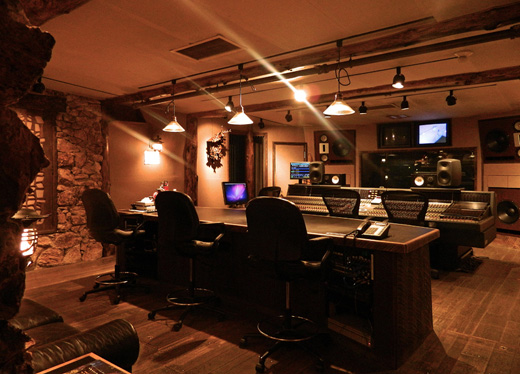
The MCS Studio 4 “Log Cabin” has long stood as one of NYC’s more distinctive tracking and mixing environments.
“One thing that I’d heard too many times from people working in Studio 4 was, ‘This room is great, but what’s up with these speakers?’” says MCS Chief Tech Joel Scheuneman. “What we had in there from the beginning was a pair of Tannoy 215 DMT’s with Bryston amps. They were good speakers, but people were looking for more.”
Over the years, Studio 4’s music client list has grown to include the likes of Chick Corea, Commissioner Gordon, Norman Connors, Jimmy Douglass, Eliot Goldenthal, Ja Rule, Wyclef Jean, Bashiri Johnson, Seven Aurelius, and Bobby Womack, plus film/TV/brand clients including True Grit, Extremely Loud and Incredibly Close, Lucky Charms, American Airlines, Mercedes Benz, and more. But in the expanding competition that marks NYC’s current studio scene, Scheuneman and his team realized last year that significant action was needed to retain and grow their customer base.
“We looked into our options,” Scheuneman recalls, “and I said, ‘This is not something we can fix with a Band Aid.’ If we were going to be serious, we needed to look at a real upgrade. In a studio, you want to have great mics, you want to have the space to do your thing. Of course all the gear is the baseline, and you can’t do anything without Pro Tools, a console, and all the rest of it, but having great speakers will really be the thing that differentiates what you can do.”
Upgrading in a Buyer’s Market
Studio 4 is the sister to MCS’ Studio 7 upstairs, the home to one of NYC’s knockout consoles – a Neve VR 96-channel desk that appears stunningly large in real life. 5.1 Surround capable, Studio 7 is connected directly to two significant Manhattan recording spaces: the elegant and acoustically superb 10,000 square foot space The Grand, and the historic 2800 capacity ex-opera house The Hammerstein.
All of the MCS facilities spring from the initiative of Oscar Hammerstein, who founded this artfully commercial complex in 1906. Starting in 1926, The Grand was the scoring stage for Warner Brothers Studio’s Don Juan, which stands as the film industry’s first motion picture with a synchronized, pre-recorded musical soundtrack. Arturo Toscanini, Leonard Bernstein, Itzhak Perlman, Placido Domingo, Eliot Goldenthal, Sting, and many more have recorded here.
Obie O’Brien, MCS Director of Video Post & Audio Production, oversees the studios, with respected engineers like Chief Audio Engineer Darren Moore on staff. Scheuneman, who has a long-running professional relationship with the studios (and operates the boutique manufacturer Origin Point Audio in his spare time), saw the monitor project as the smart business move to make.
“There’s a lot of choices out there,” he says of the current local and national studio landscape. “I think there’s a lot of work out there, too. We’ve all gone through a kind of transforming period over the last 10 years or so, and there’s been a big change: landmark NYC facilities like Sony and the Hit Factory aren’t around anymore. It’s a pretty dynamic thing, but MCS has been able to keep our head above water, and just keep keeping on.
“Investing in monitors is not like buying a Pro Tools system that will go obsolete in a couple of years,” Scheuneman continues. “That’s one reason we were able to make this investment. All the stars lined up, it was the right time, place and situation. Everyone got on board, and then I said, ‘Oh no, now I actually have to do this!’”
Making the New Monitor Wish List
With the green light from management, Scheuneman drew up a list of criteria for the monitors to replace the Tannoys that had served proudly in the room for twenty years.
“We were looking for something that was modern, that would stand up against the competition — that was the first thing,” he explains. “The second thing was we wanted it to be very loud. The chief complaint we had heard in the past was that the Tannoys were not loud enough. And the third important factor was we wanted them to fit without too much of a major rebuild: They’re soffit-mounted speakers, so we wanted as much of a plug-and-play as we could get. Then the Griffin Audio monitors moved to the top of the list.”
Founded by the prolific studio architect Fran Manzella and Partner/designer Lars Tofastrud, Griffin Audio had the ideal monitor for MCS in their flagship G1 In Wall, an in-wall version of their G1 Mastering Loudspeaker. Designed by Manzella & Tofastrud to deliver for mixers, they provide extremely low distortion and high resolution all the way up to (and at) maximum sound pressure level.
Manzella and Scheuneman decided to complement the G1’s with dual Griffin Audio LFE 18” subwoofers. Capable of substantial low frequency output right down to 20 Hz, they can achieve impressive levels while maintaining great sonic integrity, without mud or boominess.
Equipped with push-button presets and working in conjunction with digital DSP, Griffin monitors offer selectable characteristics, allowing the user to change their emphasis based on the current session’s purpose. “These monitors are accurate, but also very versatile, and can be tuned to the client’s needs,” notes Manzella. “It’s hard to say there’s a universal monitor out there that’s great for everything, but that’s what we think we have. Like other studios these monitors are in, MCS has a cross-section of clients — major hip hop sessions to major R&B, jazz, light rock, heavy rock.
“Engineers like the idea of multiple presets that take full advantage of the capabilities of the monitors,” he continues. “There’s a flat monitor setting, there’s slightly exaggerated bass for R&B. There’s a lot of low end capability you don’t necessarily want for rock, but when you’re playing back a hip hop record that’s exactly what you want.”
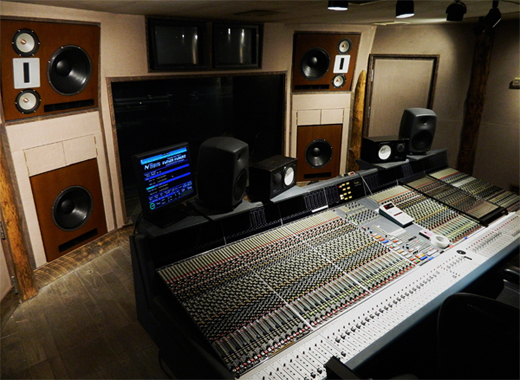
The Griffin Audio G1 main monitors fit nicely into the pre-existing Tannoy soffits, while custom cabinetry was created for dual Griffin subs.
Managing the Installation
With the exact monitor configuration specified, the next step was to plan their installation in Studio 4 (see the floor plan here). Endowed with warm woods and natural stone in the control room, a large live room with a great-sounding drum booth, plus a private lounge and kitchen, the studio has long been noted for its welcoming atmosphere.
With its considerable breathing room, Studio 4 has proven to be a spacious sonic oasis for producers and artists who want to work in comfort and with focus all day. Scheuneman and Manzella set out to fill the space perfectly with the sound of the new monitors.
In a bit of semi-serendipity, the Griffin G1 had been modeled on the dimensions of the Tannoy 215, meaning it would slide perfectly into MCS’ pre-existing soffits. Next, Manzella’s life as a studio designer came in handy.
“We brought in our measurement gear and talked with the engineers about what they thought was lacking in the old system,” notes Manzella. “Then we did a physical measurement of the wall, to verify what we would be installing, and also to know we could install the custom-fit subwoofers.
“Our approach is, ‘Tell us what you need, and we’ll build the system to fit the need.’ MCS’ needs were clear: Make it very loud, very clean, and be able to do big, low frequencies for club music when necessary. That’s when we agreed dual subs made sense.”
Manzella went back to the Griffin shop, and together with Tofastrud created a customized pair of G1s for MCS. The pair of Griffin LFE 18’s were replacing one free standing sub that previously been in the middle of the room. Now the dual subs were going to reside directly under the pre-existing main soffits, meaning a completely custom cabinet had to be designed to fit the room and setup.
In the amp closet is a dual drive rack holding the DSP-providing DBX 4820. And of course sufficient power would have to be delivered to the self-powered Griffin systems — with a commensurate manifold increase from 300 watts per side to 3,000 watts per side required to drive the amps.
“These are all Class D technology amps – you’re able to get a really high power rating in a small package with an extremely efficient operating mode,” says Manzella. “You’re able to get up to 98% efficiency out of these amps, and they create very little heat. They require AC and ventilation, but I assured Joel they wouldn’t have an efficiency problem.”
The Next Level – Inside the Console
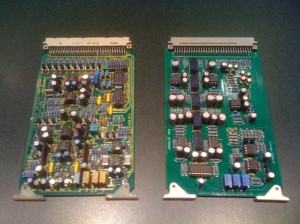
Can you spot the new volume control? Right, Scheuneman’s custom circuit board sports a noticeably streamlined design.
Subsequent to installation of the mains and subs, MCS staffers and select special guests began evaluating the renewed room and taking notes. After a tweak wish list was drawn up, Manzella returned to re-tune the speakers.
“Fran came back to take into account the feedback we were getting from people who had been using it for a couple of months,” Scheuneman says. “After some adjustments, the sound of the system in the room got even better.”
Happy ending, right? Actually, despite the successful drop-in for the new monitoring system, that’s not what made the Studio 4 renovation complete. Listening tests had also revealed in advance that there was a sonic bottleneck in the classic Neve VR, which is equipped with Flying Faders, across 60 mono input modules and 12 stereo input modules — a total of 84 inputs.
The culprit? The big board’s volume control. “The old Neve VCA chip wasn’t sounding good at all,” says Scheuneman, who was a Neve field tech before he joined MCS. “I guess it’s not surprising — the part in the Neve is from 1988, so there was a lot of room for improvement there.”
Parallel to the speaker project’s progress, Scheuneman went to work on replacing the old VCA chip, which was clouding the mid range. After examining the VR’s schematics, he designed a new circuit board which duplicated the functions of the prior one, but with a great deal more efficiency.
“This came out of a conversation I had with Blue Wilding of Audio Power Tools about monitor controllers in general, and I started asking, ‘What can you use to make a great-sounding volume control?” Scheuneman states. “It sounds simple, but when you dig into what you have to do, it’s not really that simple.”
Scheuneman’s research eventually led him to a component called a digitally controlled potentiometer, which is actually an all-analog device that, like an op amp, can be instructed digitally to adjust gain levels. Blessed with extremely low distortion, the new pot completed the puzzle. From there, the sound of the Neve attained significantly increased bandwidth — the better to send live tracking and mixing signal out to the Griffin system.
The Finished Product
For anyone who’s visited since the total tune up, the results of the whole scale upgrade speak for themselves. Listening in Studio 4 provides a memorable listening experience, thanks to an extremely crystal-clear musical delivery at all volumes, revealing great depth and detail.
With such ample power, the system feels relaxed at all times, whether it’s set at a whisper or something more substantial. True to Manzella’s plan, the monitors never come close to breaking up, not even with the master volume of the Neve cranked 100% to the right. The result is a system that truly thrills when turned up – this is music as a roller coaster ride, in the best possible sense. And for those seated in the producer’s couch between the console and the live room glass, the reward is a totally transporting experience for hot-cranked EDM or hip hop.
MCS’ sonic strategy would appear to raise the expectations for world class NYC studios yet again — Studio 4 is now one of the most outstanding sweet spots in the region. “Unanimously, everybody who has heard the system thinks it’s awesome,” says Scheuneman. “We met our objective: It’s a very true-sounding system. It’s incredibly loud, but it’s not just hype, it’s very clean — which is what we were going for.
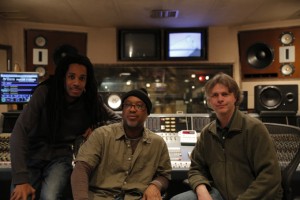
Commissioner Gordon, center, has become a rabid fan. Flanked by (l) MCS’ Darren Moore and (r) Joel Scheuneman.
“When Fran was tuning the system, I said, ‘You must think we only listen loud all day!’ We don’t — it’s for that one moment when you want to turn it up loud enough to impress somebody. But this system sounds the same at low, middle, or high volumes. And whether you’re tracking or mixing, if you can really hear what you’re doing, then what you get done is just going to be that much better.”
One top pro who’s already been won over by the updated room is Commissioner Gordon, the multi GRAMMY-wining engineer/producer whose credits include Lauryn Hill, Amy Winehouse, Stephen Marley, KRS-One, Will Smith, Santana, and Jay-Z.
“It’s definitely the best sounding-room I’ve heard in the city,” he says frankly. “This control room is pretty sizable, and to have a room this size have an accurate, clear and in-your-face sound is an achievement. With the combination of the monitor placement, the tuning, the wood and stone of the studio itself, everything is just in the magic spot.
“It’s loud in here, but it’s loud and clear – not abrasive,” Commissioner Gordon continues. “When you’re listening comfortably, you can make judgments on placements. You can hear the space in between things, as opposed to everything just all together. It’s like pulling a picture into focus.”
Agents of Audio Change
The word is starting to get out on Studio 4, with the room getting increased bookings not only for tracking and mixing, but for listening parties hosted by everyone from Cypress Hill’s DJ Muggs to Ultra Records.
And while a next-level listening experience inside the studio is a serious draw, the MCS team and Manzella both kept their eye on the true benefit – mixes that work well everywhere else in the world. “Sounding great in the studio is one thing, but what happens when I’m listening at home, in the car, or in a club?” says Manzella. “These are the things that people judge a studio by. It’s really about the translation to other environments.”
All of which comes full circle to attracting an expanding scene of producers, engineers, and artists into Studio 4. With New York City’s fast-evolving audio scene always intensifying, an upgrade on MCS’s scale is the name of the game for staying competitive.
“It’s a breath of fresh air,” Joel Scheuneman says. “These new speakers are the cherry on top of our room, and I think the upgrade will make a difference to our clients. For anyone who’s shopping around, I think when they experience Studio 4 now they’ll say, ‘That’s what I want to hear.’”
— David Weiss
Please note: When you buy products through links on this page, we may earn an affiliate commission.







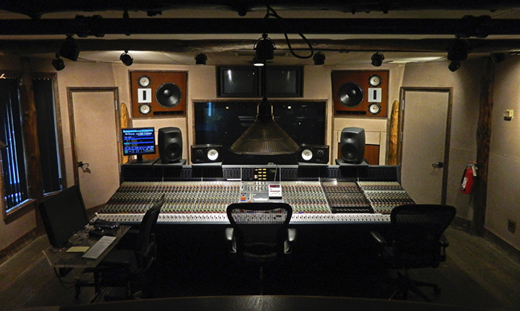
Francis Manzella
February 27, 2013 at 7:36 am (12 years ago)Thanks for the great coverage David! nice article.